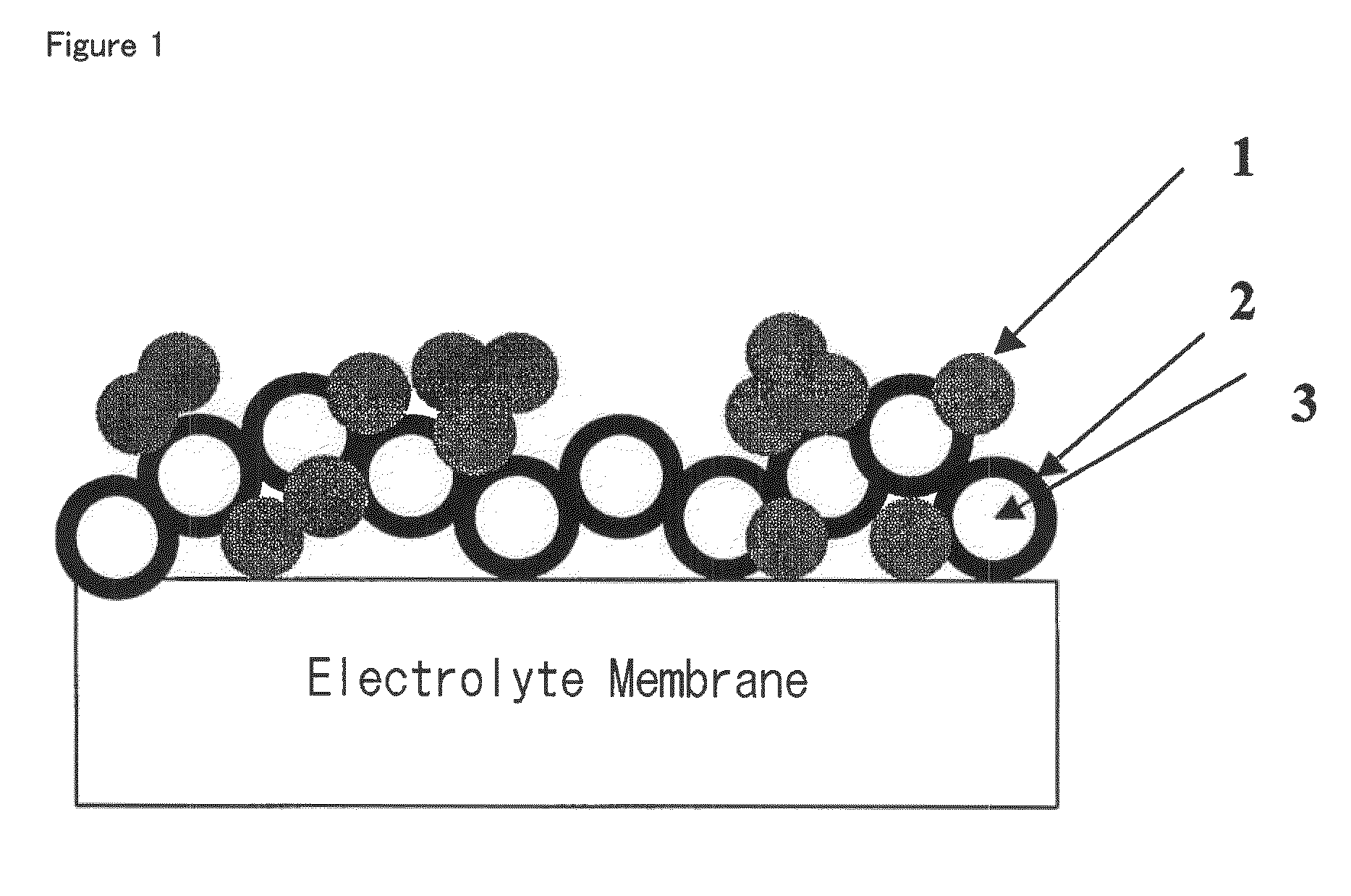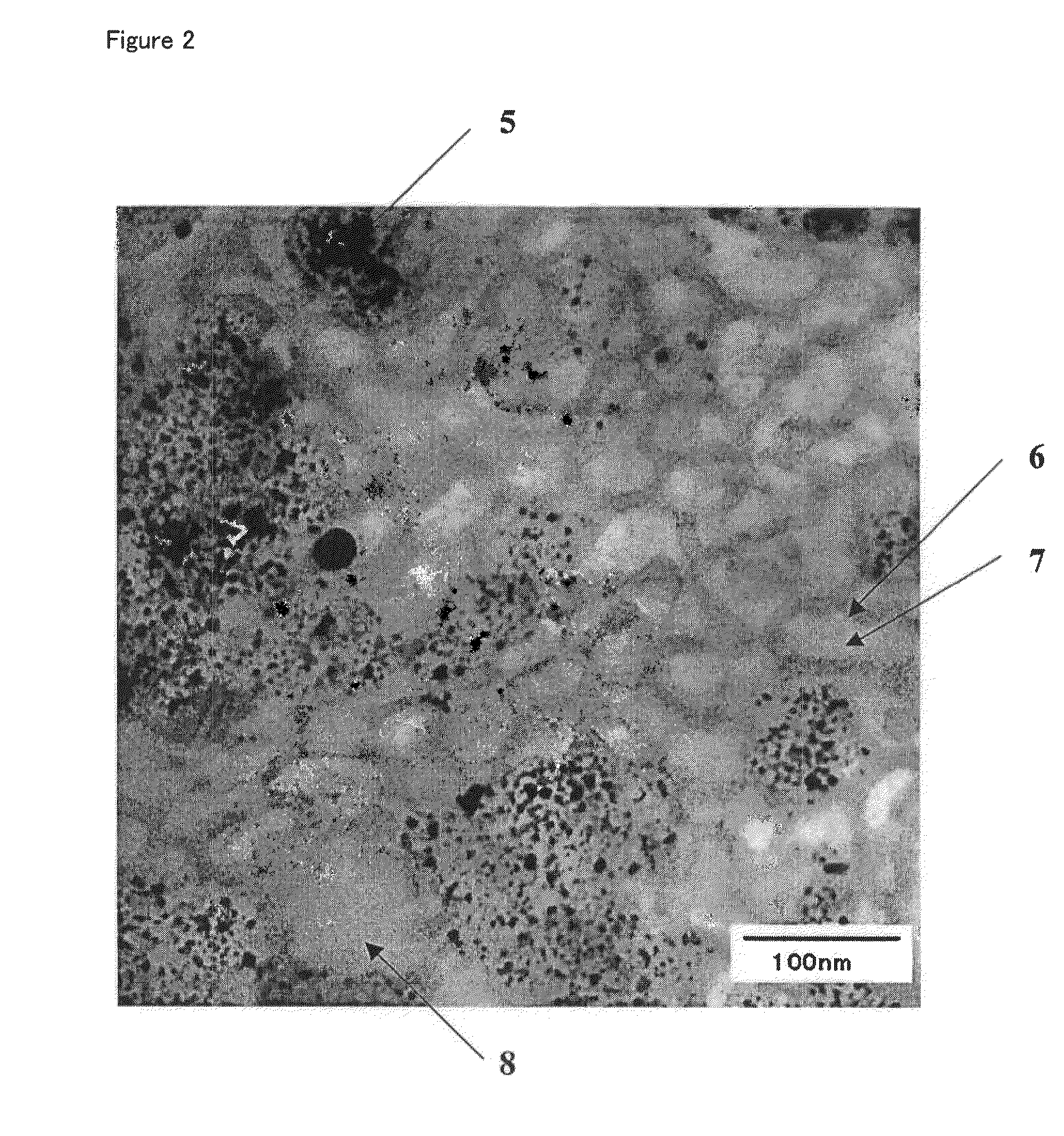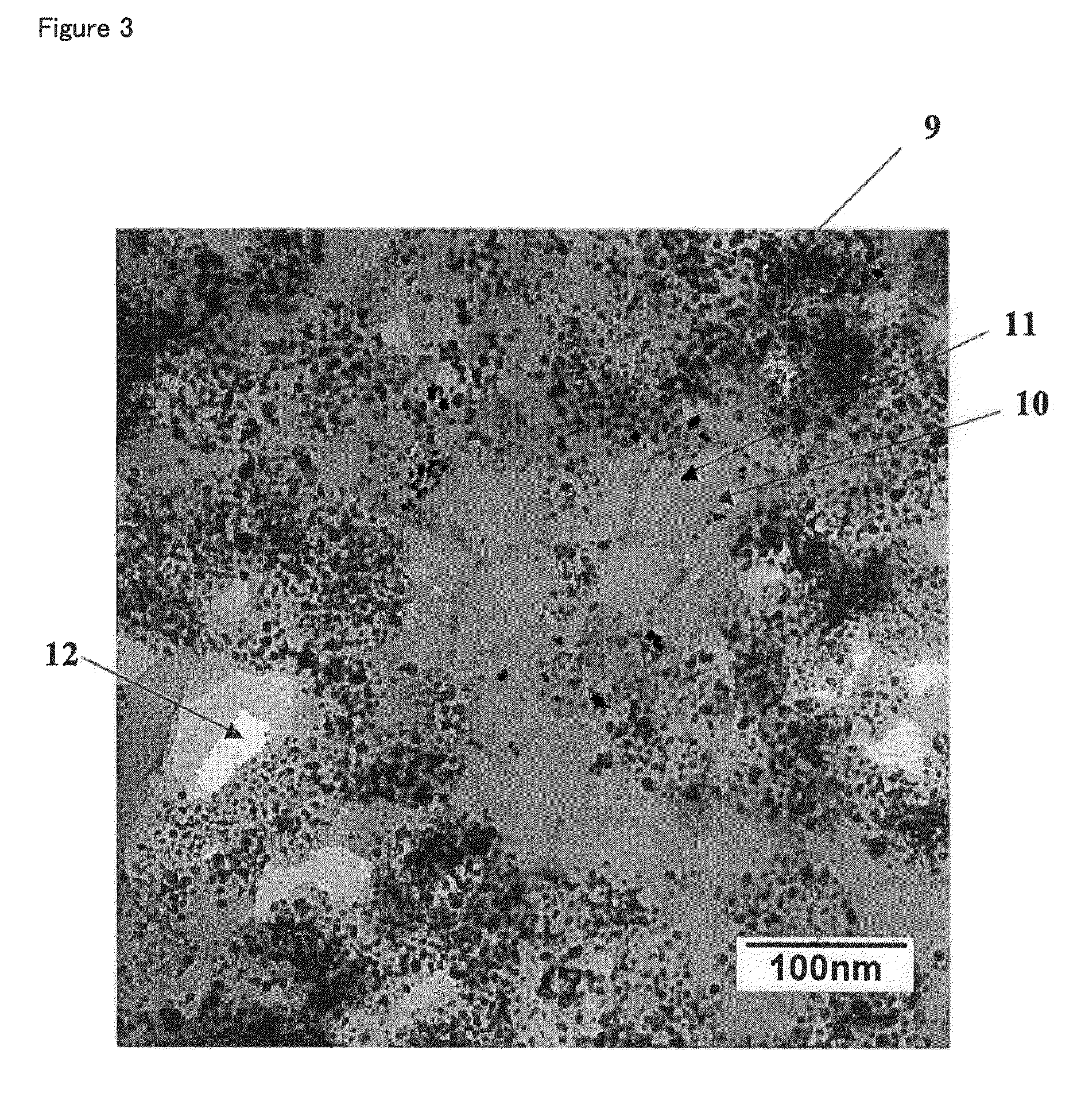Catalyst layer and preparation process thereof, and membrane-electrode assembly and polymer electrolyte fuel cell using the catalyst layer
a catalyst layer and membrane electrolyte technology, applied in the direction of organic compound/hydride/coordination complex catalysts, physical/chemical process catalysts, cell components, etc., can solve the problems of difficult to ensure sufficient operation time, hard for such particles to contribute to the reaction, and inability to contribute to electrode reaction, etc., to achieve excellent electrode reaction efficiency, improve cell efficiency, and reduce the amount of noble metal catalysts used
- Summary
- Abstract
- Description
- Claims
- Application Information
AI Technical Summary
Benefits of technology
Problems solved by technology
Method used
Image
Examples
referential example 1
Preparation of a block copolymer composed of poly (α-methylstyrene) Block (Polymer Block (A)) and Hydrogenated Polybutadiene Block (Polymer Block (B))
[0083]In a similar process to a previously reported process (WO 02 / 40611 A), a poly (α-methylstyrene)-b-polybutadiene-b-poly (α-methylstyrene) triblock copolymer (hereinafter abbreviated as mSEBmS) was synthesized. The number average molecular weight (GPC measurement, in terms of polystyrene) of the resulting mSEBmS was 76,000, and the amount of the 1,4-bond determined by 1H-NMR measurement was 55% and the content of the α-methylstyrene unit also determined by the 1H-NMR measurement was 30.0% by mass. Further, it was revealed by composition analysis through 1H-NMR spectrum measurement that α-methylstyrene was not substantially copolymerized into the polybutadiene block.
[0084]A solution of the synthesized mSEBmS in cyclohexane was prepared, the solution was put in a pressure proof vessel whose atmosphere had sufficiently been replaced w...
referential example 2
Preparation of a Block Copolymer Composed of Polystyrene (Polymer Block (A)), Hydrogenated Polyisoprene (Polymer Block (B1)) and Poly (Tert-Butylstyrene) (Polymer Block (B2))
[0085]The block copolymer was synthesized in a similar process to a previously reported process (JP 2006-49002 A). Namely, after 568 ml of dehydrated cyclohexane and 1.14 ml of sec-butyllithium (1.3M-cyclohexane solution) were put in a 1,000-ml egg-plant type flask, 4.27 ml of styrene, 53.3 ml of 4-tert-butylstyrene, 66.4 ml of isoprene, 52.6 ml of 4-tert-butylstyrene and 9.30 ml of styrene were added successively and polymerized respectively at 60° C. to synthesize polystyrene-b-poly(4-tert-butylstyrene)-b-polyisoprene-b-poly(4-tert-butylstyrene)-b-polystyrene (hereinafter, abbreviated as StBSItBSS). The number average molecular weight (GPC measurement, in terms of polystyrene) of the obtained StBSItBSS was 167,471, the amount of the 1,4-bond, the content of the styrene unit and the content of the 4-tert-butyls...
example 1
(1) Synthesis of Sulfonated HmSEBmS
[0087]A sulfonating reagent was prepared by reacting 49.5 ml of acetic anhydride with 22.1 ml of sulfuric acid at 0° C. in 99.0 ml of methylene chloride. Separately, 100 g of the block copolymer HmSEBmS obtained in Referential example 1 was vacuum dried for 1 hour in a glass-made reaction vessel equipped with a stirrer, the inside atmosphere of the reaction vessel was replaced with nitrogen, 1,000 ml of methylene chloride was added, and the mixture was stirred at 35° C. for 4 hours to dissolve the block copolymer. After the dissolution, the sulfonating reagent was gradually added dropwise thereto over a period of 20 minutes. After stirring at 35° C. for 6 hours, the polymer solution was poured into 2 L of distilled water under stirring to coagulate and deposit the polymer. The deposited solid matter was washed with distilled water of 90° C. for 30 minutes, and then filtered. This operation of washing and filtration was repeated until the pH of the ...
PUM
| Property | Measurement | Unit |
|---|---|---|
| particle size | aaaaa | aaaaa |
| particle size | aaaaa | aaaaa |
| particle size | aaaaa | aaaaa |
Abstract
Description
Claims
Application Information
 Login to View More
Login to View More - R&D
- Intellectual Property
- Life Sciences
- Materials
- Tech Scout
- Unparalleled Data Quality
- Higher Quality Content
- 60% Fewer Hallucinations
Browse by: Latest US Patents, China's latest patents, Technical Efficacy Thesaurus, Application Domain, Technology Topic, Popular Technical Reports.
© 2025 PatSnap. All rights reserved.Legal|Privacy policy|Modern Slavery Act Transparency Statement|Sitemap|About US| Contact US: help@patsnap.com



